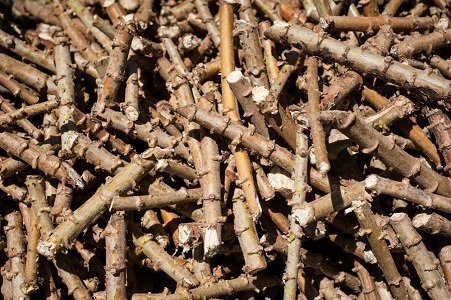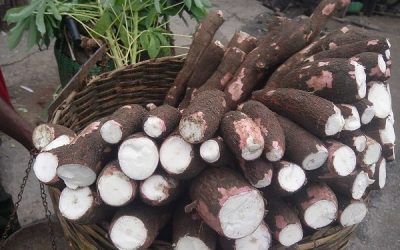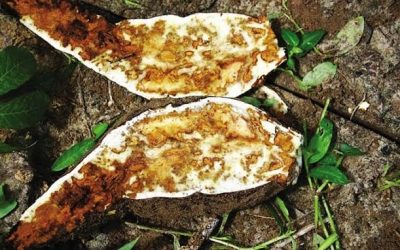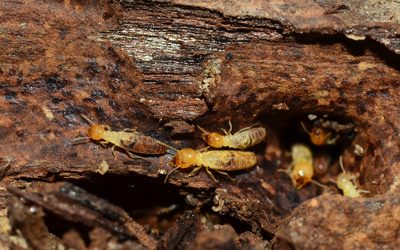How to propagate Cassava

Cassava is propagated by cuttings, by planting pieces of stem.
The roots of cassava are not used for making a new plantation, and thus all the harvest can be eaten or sold.
To make cuttings, choose stems 2 to 4 centimetres thick, from the strongest plants which are not diseased and which have already produced tubers.
After the harvest, tie the selected stems in bundles. Wait at least 10 days before planting them.
Keep the bundles in a cool, dry place until planting time.
But remember that the cuttings must not be made from the stems until you are ready to plant.
Cut each stem into pieces 20 to 30 centimetres long. There should be 4 to 6 growth buds on each piece. Each stem can be made into 4 or 5 cuttings.
How to plant cassava
To plant cassava, push into the soil the end of the piece of stem that was nearer to the ground.
Plant the cuttings in mounds or ridges. Plant when the soil is quite wet, after the beginning of the rainy season. Plant the cuttings either straight or slanting. Push them well into the earth, leaving only 2 or 3 buds above ground.
Cassava cuttings may be planted straight or slating
Press the earth well down round the cuttings. Then the roots that develop will be well nourished by the soil.
Usually the rows are 1 to 1.5 metres apart, and the plants 1 metre apart.
With this spacing, there are between 7 000 and 10 000 cassava plants to the hectare.
But the number of cuttings to the hectare varies with the region, soil and variety.
If cassava is planted at the right density, the yield is heavy; the roots occupy all the soil and fewer weeds grow, so that fewer cultivations are needed


